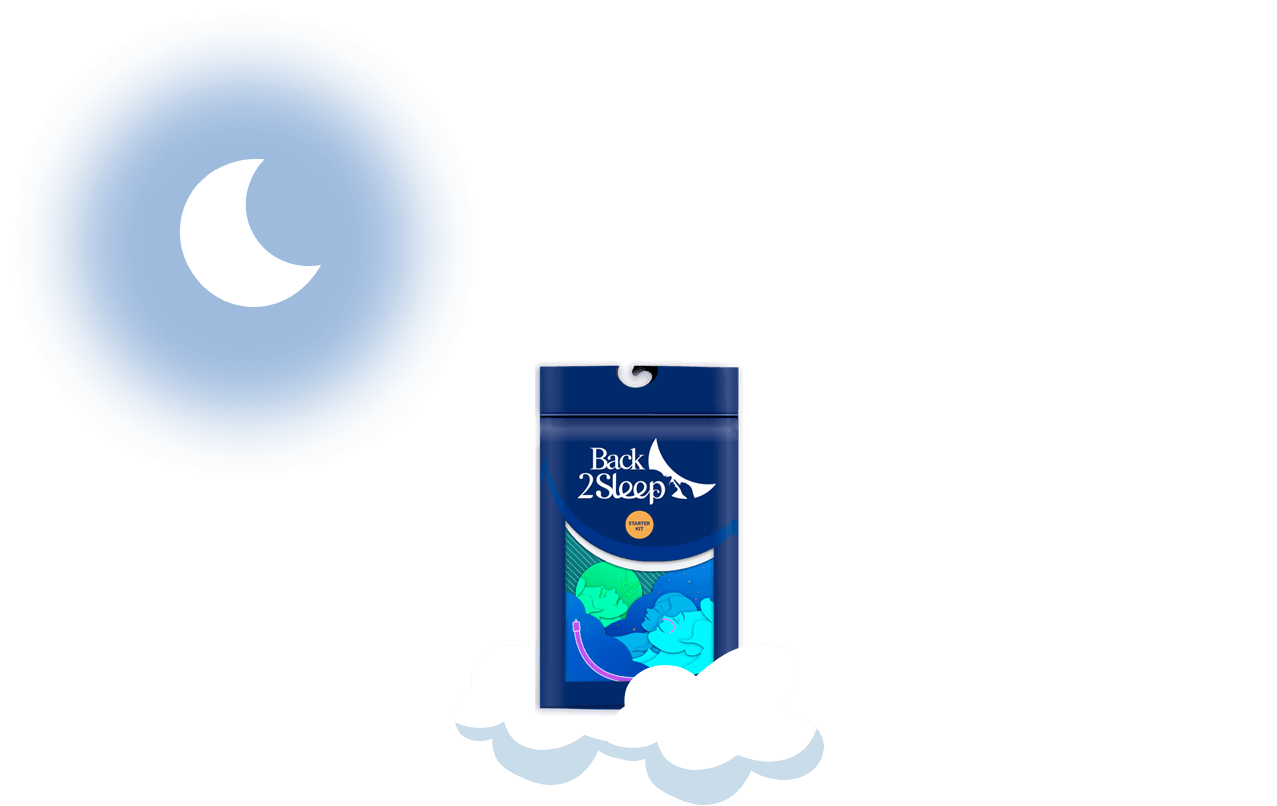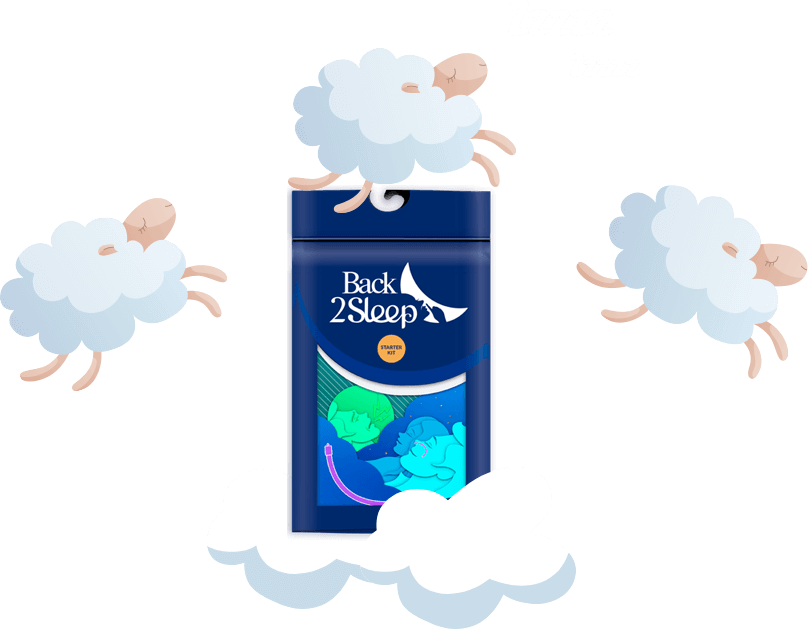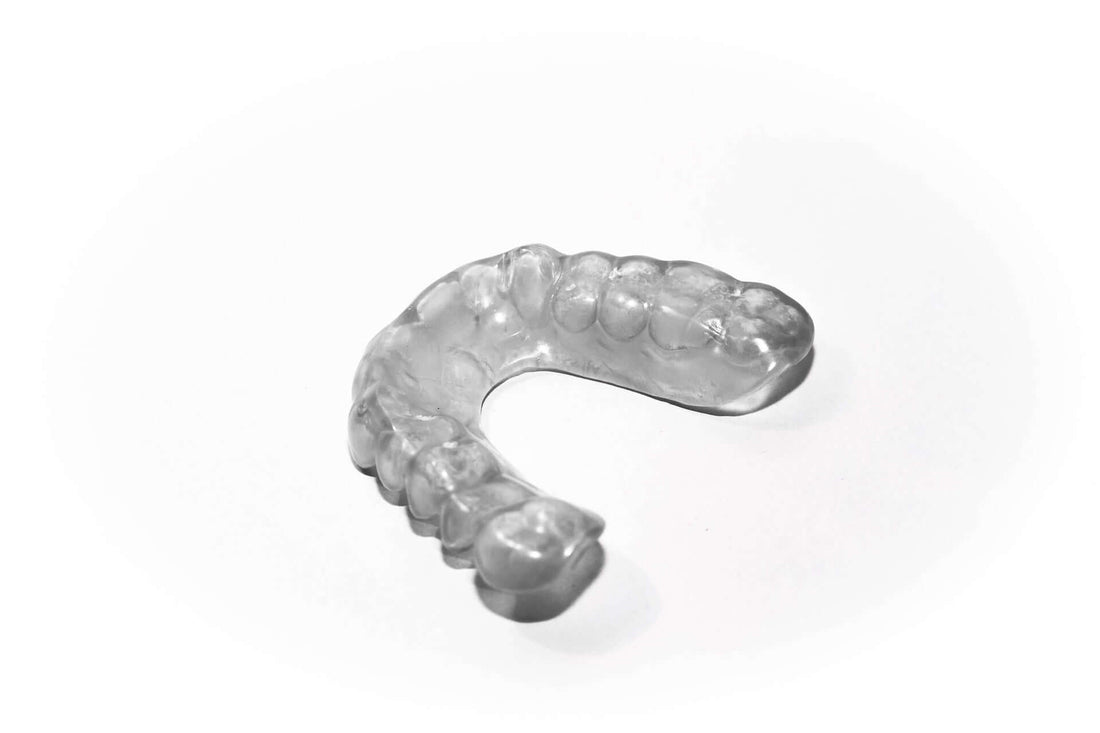Dental Splints & Anti-Snoring Aligners: Complete Guide to Orthodontic Solutions
Struggling with snoring, teeth grinding, or misaligned teeth? Discover how dental splints—from transparent orthodontic aligners to specialized anti-snoring mouthpieces—offer discreet, removable solutions, plus why innovative alternatives like Back2Sleep provide superior comfort and effectiveness.
Dental splints have revolutionized orthodontics and sleep medicine, serving dual purposes as transparent, removable orthodontic appliances that straighten teeth while correcting malocclusion, and as nighttime anti-snoring devices that reposition the jaw to maintain open airways during sleep. Made from medical-grade resin designed to fit precisely over dental arches, these customized appliances exert targeted pressure for tooth movement or advance the lower jaw forward to prevent airway obstruction—offering more discreet, comfortable alternatives to traditional metal braces and bulky CPAP machines. However, for the 10 million snorers in France alone, innovative solutions like the Back2Sleep intranasal orthosis provide position-independent relief without the discomfort, daily cleaning requirements, or jaw pain that dental appliances can cause.
Understanding the different types of dental splints, their specific applications, benefits, and limitations helps you make informed decisions about which orthodontic or anti-snoring solution best addresses your unique dental and respiratory needs.
Dental Splints: Market Impact and Usage
Understanding Dental Splints: Types, Materials, and Applications
A dental splint (also called an aligner, gutter, or orthodontic tray) represents a removable, custom-fabricated oral appliance typically constructed from clear medical-grade resin or thermoplastic materials. These devices serve multiple therapeutic purposes in modern dentistry, from orthodontic tooth movement to bruxism protection and snoring reduction.
Primary Types of Dental Splints
Orthodontic Aligners: Transparent, removable trays designed to gradually shift teeth into proper alignment through controlled pressure—popular alternatives to traditional metal braces (examples: Invisalign, ClearCorrect).
Bruxism Guards: Protective nighttime appliances that prevent tooth grinding and clenching damage, distributing bite forces evenly across all teeth to reduce wear and jaw tension.
Anti-Snoring Splints: Mandibular advancement devices (MADs) that hold the lower jaw in a forward position during sleep, maintaining airway openness to reduce snoring and mild sleep apnea.
Whitening Trays: Custom-fitted appliances designed to hold tooth-whitening gel against enamel surfaces for specified durations, delivering aesthetic smile enhancement results.
Retention Splints: Post-orthodontic appliances worn after braces removal to maintain newly achieved tooth positions, preventing relapse into original misalignment patterns.
Occlusal Splints: Therapeutic devices addressing temporomandibular joint (TMJ) disorders and bite problems, repositioning jaw relationships to alleviate pain and dysfunction.
How Dental Splints Are Created
The fabrication process begins with an initial orthodontic consultation where a specialized dentist or orthodontist evaluates your dental structures, bite relationships, and treatment goals. Using dental impressions (traditional molds or digital 3D scans), technicians create precise replicas of your unique dentition.
Modern CAD/CAM technology (computer-aided design and manufacturing) allows for highly accurate splint production. The resin material is thermoformed over these models to create appliances that fit snugly over dental arches, exerting calculated pressure on specific teeth or maintaining jaw positions as designed.
For orthodontic alignment purposes, patients typically receive a series of progressive splints—each slightly different from the last—that gradually move teeth toward their ideal positions over months to years. The removable nature allows for eating and proper oral hygiene maintenance unlike fixed metal braces.

Dental Aligners for Adults: Orthodontic Treatment Beyond Adolescence
Adult orthodontics has surged in popularity as transparent aligner technology offers discreet tooth straightening without the aesthetic concerns of traditional metal braces. These removable, clear appliances are custom-designed to address each patient's unique dentition patterns, correcting misalignment while maintaining professional appearance.
Treatment Applications and Benefits
Adult aligners serve as effective adjunct orthodontic treatments addressing various dental concerns:
- Tooth retention and alignment: Maintaining results after braces removal, preventing natural drift back toward original positions
- Spacing corrections: Closing gaps between teeth or creating space for proper alignment
- Rotation adjustments: Turning twisted teeth into correct positions within the dental arch
- Bite corrections: Addressing overbites, underbites, crossbites, and open bites through controlled movement
- Pre-restorative alignment: Positioning teeth optimally before crowns, bridges, or implant placement
Bruxism Protection: Nighttime Grinding Guards
Bruxism—unconscious teeth grinding and clenching occurring primarily during sleep—affects millions of adults, causing significant dental damage over time. Left untreated, this condition leads to:
⚠️ Consequences of Untreated Bruxism:
• Enamel wear: Grinding erodes protective tooth enamel, exposing sensitive dentin layers
• Tooth fractures: Excessive forces crack or break teeth, requiring expensive restorations
• Jaw pain: Temporomandibular joint (TMJ) stress causes chronic pain, clicking, and limited jaw movement
• Overlapping teeth: Constant pressure can shift teeth out of alignment over years
• Headaches: Muscle tension from clenching radiates to head and neck regions
• Gum recession: Excessive forces damage supporting gum tissues and bone
Bruxism splints create a protective barrier between upper and lower teeth, distributing grinding forces across the entire appliance rather than concentrating them on individual teeth. Made from durable yet cushioning materials, these guards significantly reduce dental damage while often decreasing grinding behavior itself through neuromuscular feedback.
Cost Considerations and Insurance Coverage
Similar to other orthodontic treatments, dental aligner costs in France typically range from €1,500-€6,000 depending on treatment complexity and duration. Many cases qualify for partial reimbursement:
- Health insurance (Sécurité Sociale): Provides limited coverage for orthodontic treatment, primarily for patients under 16 years old
- Supplementary insurance (mutuelle): Often covers 70-100% of remaining costs after health insurance, depending on your specific policy tier
- Dental surgeon fees: Include initial consultation, treatment planning, appliance fabrication, and follow-up adjustments throughout treatment
- Payment plans: Many orthodontists offer monthly installment options to make treatment more financially accessible

Anti-Snoring Dental Splints: Mandibular Advancement Devices Explained
To understand how anti-snoring dental splints function, it's essential to first comprehend the physiological mechanism of snoring. This breathing noise emitted during sleep can range from gentle vibrations to thunderous sounds reaching 100 decibels—comparable to a passing truck or chainsaw.
What Causes Snoring?
Snoring occurs when relaxed throat muscles, soft palate, uvula, and tongue allow partial airway obstruction during sleep. As breathing continues through these narrowed passages, turbulent airflow causes soft tissues to vibrate, producing characteristic snoring sounds. Far from harmless, chronic snoring indicates breathing difficulties that can escalate to obstructive sleep apnea while severely disrupting sleep quality for both snorers and partners.
How Anti-Snoring Splints Work
Designed by dental specialists, anti-snoring splints (also called mandibular advancement devices or MADs) work through a simple but effective mechanism: holding the lower jaw and tongue in a forward position during sleep. This advancement serves multiple therapeutic purposes:
Prevents Tongue Collapse: Forward jaw positioning keeps the tongue from falling backward into the throat, maintaining clearer airway space throughout sleep.
Stretches Pharyngeal Tissues: Jaw advancement elongates soft tissues in the throat region (pharynx), reducing their tendency to vibrate and obstruct breathing.
Opens Airway Diameter: The combined effects increase the cross-sectional area of upper airways, facilitating easier air passage with less turbulence and vibration.
Improves Breathing Mechanics: Better airflow enhances oxygen intake during sleep, reducing micro-awakenings caused by breathing disruptions.
Fitting Requirements and Medical Supervision
The effectiveness and safety of anti-snoring splints depend heavily on proper fitting and professional oversight. Essential steps include:
Initial Consultation: Dental surgeon or orthodontist specializing in dentofacial orthopedics evaluates jaw structure, bite relationships, and suitability for device.
Custom Fabrication: Precise dental impressions or digital scans create perfectly fitted upper and lower components that connect to advance the jaw appropriately.
Fitting Adjustment: Practitioner fine-tunes advancement distance—typically 5-10mm forward—balancing effectiveness against comfort and jaw joint stress.
Follow-Up Monitoring: Regular check-ups assess treatment effectiveness, device wear, dental health impacts, and necessary adjustments over time.
Daily Maintenance and Hygiene
For dental hygiene reasons, anti-snoring splints require daily cleaning using specialized approaches:
- Morning cleaning: Rinse thoroughly under lukewarm water immediately upon removal
- Brush gently: Use soft-bristled toothbrush with non-abrasive toothpaste or antibacterial soap
- Deep weekly cleaning: Soak in denture cleaning solution or white vinegar dilution
- Complete drying: Air dry completely before storage to prevent bacterial or mold growth
- Proper storage: Keep in ventilated case away from heat sources and pets
- Regular inspection: Check for cracks, wear, or damage requiring professional attention

Common Challenges and Limitations of Dental Splints
While dental splints offer benefits, they're not without significant drawbacks and discomforts that affect user compliance and long-term effectiveness. Understanding these limitations helps set realistic expectations.
Physical Discomfort and Side Effects
⚠️ Frequently Reported Problems with Anti-Snoring Splints:
• Jaw pain and TMJ stress: Forward positioning creates unnatural joint angles causing temporomandibular pain, clicking, stiffness upon waking—potentially worsening existing TMJ disorders
• Excessive salivation: Oral appliance stimulates saliva production, leading to drooling and disrupted sleep from frequent swallowing
• Dry mouth (xerostomia): Conversely, some users experience severe mouth dryness from breathing changes, increasing dental decay and gum disease risks
• Tooth soreness and mobility: Pressure from device attachment points causes dental discomfort; prolonged use may loosen teeth or alter bite relationships
• Gum irritation: Appliance edges can rub against gingival tissues, causing inflammation, soreness, and potential recession
• Difficulty tolerating: Initial adaptation period of 2-4 weeks feels uncomfortable for many; 30-50% of users discontinue due to persistent discomfort
Practical Limitations
- Nightly wear requirement: Effectiveness demands consistent use every night—missing nights reduces therapeutic benefits
- Daily maintenance burden: Cleaning, drying, and proper storage add time to morning and evening routines
- Bulkiness concerns: Though marketed as "discreet," these appliances feel noticeable and can impede natural sleep movements
- Speech difficulty: Some users report temporary speech alterations or difficulty communicating if waking during night
- Limited effectiveness: Works primarily for position-dependent snoring; less effective for anatomical obstructions, severe sleep apnea, or obesity-related breathing issues
- Contraindications: Not suitable for patients with certain dental conditions, active periodontal disease, insufficient teeth, or severe jaw problems
Cost and Accessibility Barriers
Financial considerations often limit accessibility to anti-snoring splints:
| Cost Factor | Typical Range | Notes |
|---|---|---|
| Initial consultation | €50-€150 | Diagnostic evaluation, impressions, treatment planning |
| Custom device fabrication | €500-€2,500 | Varies by complexity, materials, laboratory fees |
| Follow-up adjustments | €50-€100 per visit | Typically 3-5 visits in first year |
| Replacement cost | €400-€1,800 | Required every 2-5 years due to wear or dental changes |
| Insurance reimbursement | Variable, often limited | Coverage typically 30-70% if medically indicated |

Why Back2Sleep Surpasses Dental Splints for Snoring Relief
No Jaw Discomfort
Unlike mandibular advancement devices causing TMJ pain and bite changes, Back2Sleep works internally without stressing jaw joints or altering dental relationships.
Minimal Maintenance
Simple 2-minute rinse replaces the daily scrubbing, soaking, and drying routine required for dental splints—more convenient for busy lifestyles.
Immediate Comfort
Over 92% report comfortable first-night use versus the 2-4 week adaptation period dental splints require, with far fewer discontinuations due to intolerance.
Position Independent
Works in any sleep position—side, back, stomach—providing consistent airway support that jaw-repositioning devices can't match when you naturally shift during night.
Alternative Anti-Snoring Solutions: Beyond Dental Appliances
As we've explored, anti-snoring dental splints present numerous challenges including discomfort, maintenance demands, and limited effectiveness. Fortunately, a wide range of alternative treatments addresses snoring through different mechanisms, offering options for various severities and preferences.
Natural and Complementary Approaches
For mild to moderate snoring, natural remedies provide low-risk first-line interventions:
- Homeopathic treatments: Remedies like Nux vomica, Opium, or Lemna minor may reduce snoring in responsive individuals
- Acupuncture therapy: Traditional Chinese medicine approach targeting specific points to improve upper airway muscle tone
- Essential oil inhalations: Peppermint and eucalyptus oils decongest nasal passages when inhaled before sleep—learn more in our natural remedies guide
- Throat exercises: Oropharyngeal exercises strengthen muscles supporting airways, reducing collapse tendency
- Position therapy: Side-sleeping prevents gravitational tongue collapse that back-sleeping encourages
Back2Sleep Intranasal Orthosis: Revolutionary Alternative
The Back2Sleep intranasal device represents a paradigm shift in snoring management, addressing airway obstruction directly at the critical point rather than indirectly through jaw repositioning.
✓ How Back2Sleep Works Differently:
This CE-certified medical device consists of a soft, hypoallergenic silicone tube inserted gently into one nostril. The tube's distal end extends to the soft palate region—the primary site of airway collapse during sleep—where it functions as an internal stent physically maintaining airway patency.
Key advantages over dental splints:
✓ Direct mechanism: Physically holds airways open at obstruction point rather than hoping jaw advancement achieves this indirectly
✓ Superior comfort: Soft medical silicone designed to match nasal anatomy; most users adapt within 1-3 nights
✓ No dental impacts: Zero effect on teeth, bite, jaw joints, or oral structures—ideal for those with dental concerns
✓ Easy maintenance: Simple rinse with soap and water; no special cleaning equipment or lengthy routines
✓ Discreet design: Virtually invisible during use with no external components
✓ Travel friendly: Compact case fits easily in luggage without requiring dental storage solutions
✓ Cost effective: Lower initial investment and replacement costs compared to custom dental appliances
Clinical effectiveness: Over 92% of users report significant snoring reduction from the first night, with consistent relief maintained through regular device replacement (approximately every 15 days for optimal hygiene and performance).
CPAP Therapy: Gold Standard for Severe Cases
For individuals with moderate-to-severe obstructive sleep apnea, continuous positive airway pressure (CPAP) devices remain the medical gold standard. These machines deliver constant pressurized airflow through a mask, preventing airway collapse through pneumatic splinting.
CPAP advantages: Highly effective for severe cases, prevents dangerous oxygen desaturations, reduces cardiovascular risks associated with untreated apnea, covered by health insurance when medically prescribed.
CPAP limitations: Bulky equipment requiring electricity and distilled water, mask discomfort and skin irritation common, noisy operation disturbs partners, challenging for travel, 30-50% non-compliance rate due to tolerability issues. Learn more about CPAP mask options and alternatives.
Surgical and Interventional Procedures
When conservative treatments prove insufficient, surgical interventions address anatomical obstructions:
- Radiofrequency ablation: Minimally invasive procedure using electrode-delivered current to shrink soft palate tissue, reducing vibration with minimal downtime
- Uvulopalatopharyngoplasty (UPPP): Surgical resection of uvula, portions of soft palate, and sometimes tonsils to widen throat space—requires general anesthesia and recovery period
- Genioglossus advancement: Surgical procedure repositioning tongue attachment point forward to prevent backward collapse
- Septoplasty: Corrects deviated nasal septum improving nasal airflow for those with structural obstruction
- Turbinate reduction: Shrinks enlarged nasal turbinates that block nasal breathing
Important consideration: Surgical options involve risks inherent to any procedure, recovery time, and no guarantee of complete snoring elimination. Reserved for cases unresponsive to conservative management.

Real User Experiences: Dental Splints vs. Back2Sleep
"I tried an anti-snoring dental splint for three months but couldn't tolerate the jaw pain and excessive drooling. Every morning I woke with a sore jaw and it was affecting my bite. Had to discontinue despite the cost."
"After struggling with an uncomfortable mandibular device, I switched to Back2Sleep and the difference is night and day. No jaw pain, minimal cleaning, and my wife says I barely snore anymore. Wish I'd tried this first!"
"My dental splint worked somewhat for snoring but the daily cleaning routine was exhausting, and I kept forgetting to do the deep weekly soaking. Eventually just stopped using it because of the maintenance hassle."
"As someone with TMJ issues, dental splints were immediately ruled out by my dentist. Back2Sleep gave me an option that doesn't stress my jaw joints at all while still addressing my snoring problem effectively."
"The orthodontic aligners straightened my teeth beautifully over 18 months. The removable aspect made eating and hygiene easy. My only complaint was the cost, but the results were worth it for my confidence."
"I spent €1,800 on a custom anti-snoring splint that gathered dust after two weeks of unbearable discomfort. Back2Sleep cost a fraction of that and actually works without the torture. Best decision I made for my sleep health."
Frequently Asked Questions About Dental Splints and Alternatives

Choosing the Right Dental or Anti-Snoring Solution for Your Needs
Dental splints serve valuable purposes across multiple applications—from discreet teeth straightening in adults to bruxism protection and anti-snoring therapy through mandibular advancement. For orthodontic and bruxism applications, these removable appliances offer genuine benefits when properly fitted and maintained under professional supervision.
However, for the 10 million snorers in France seeking relief, dental anti-snoring splints present significant challenges: jaw discomfort, excessive salivation or dry mouth, daily maintenance burdens, adaptation difficulties, and 30-40% discontinuation rates. These limitations make them less than ideal first-line solutions for many patients.
The Back2Sleep intranasal orthosis addresses snoring's root cause—airway obstruction—directly and mechanically, without involving dental structures or creating jaw stress. With 92% user satisfaction, minimal maintenance requirements, and position-independent effectiveness, it represents a superior alternative for most snorers seeking comfortable, effective, long-term relief.
Explore our comprehensive sleep health resources for evidence-based guidance, or contact our specialists for personalized recommendations on selecting the optimal solution for your unique dental and respiratory needs.








